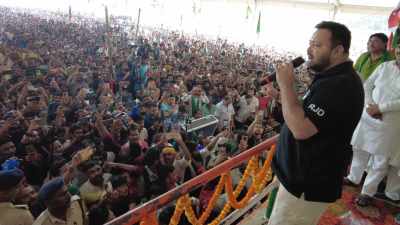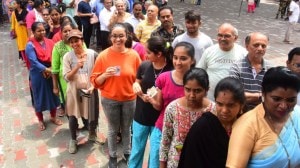Before the Bomb
AT 6.07 am, 12 minutes after Lt Col Paul Tibbets had first landed his B-29 bomber at Iwo Jima, his crew took off for what was still an indet...

AT 6.07 am, 12 minutes after Lt Col Paul Tibbets had first landed his B-29 bomber at Iwo Jima, his crew took off for what was still an indeterminate destination. On August 6, 1945, the Enola Gay (the name emblazoned, controversially but memorably, to recall Tibbets’ mother) carried the culmination of decades of pathbreaking work by the most brilliant group of individuals ever to cooperate on exploring nature’s secrets.
In a matter of minutes, the result of their diligence would present the most horrifying of contrasts: the beauty of quantum physics would be forever intertwined with the unconscionable devastation of a large civilian population.
For now the men aboard Enola Gay awaited final confirmation of target: the primary goal, Hiroshima, or if weather did not permit, Kokura or Nagasaki.
Weather permitted, and Hiroshima August 6 1945 continues to haunt us, 60 years later. It still interrogates, mostly posthumously now, each and every person associated with the science of the atomic bomb, its development, its delivery and the decision to use it in the closing days of World War Two in the last major theatre of conflict.
Historian Diana Preston gathers diverse strands in a running narrative to rescue her book from remaining merely a commemorative volume. Skillfully juxtaposing science, politics and ethnography, she anchors the book in deeply resonant moral questions.
Her story begins with Marie Curie, her struggles against the male-dominated science community, her pursuit of radioactivity and her arrogant defence of her laboratory. It draws on the life stories of remarkable men and women dedicated to unraveling the secrets of matter, individuals who inhabited a unique phase in the history of science. They raced forward in their quest by building on each other’s work.
The early decades of the 20th century had very few physicists devoted to the study of the atom and the nucleus. It is perhaps one of history’s greatest coincidences that most of them happened to possess rare genius and extremely large hearts. Neils Bohr and Lise Meitner, Leo Szilard and Peter Kapitza, Ernest Rutherford, Robert Oppenheimer, Otto Frisch, Enrico Fermi… they aided each other out of research difficulties and political danger, gathering in numbers large and small every so often to assess their rapid exploration of a new and cutting edge branch of physics, quantum mechanics.
It is one of the most enticing what-ifs. What if war and the Nazi threat had not shadowed this exciting pursuit, displacing physicists like Meitner, Fermi, Einstein and eventually even Bohr out of their native lands, dividing the community between those who refused to leave Germany and the rest, creating a crescendo of suspicion about what progress the others were making by applying their common pool of knowledge to give to their respective militaries the deadliest weapons imaginable?
Each one of them would emerge from August 6, 1945, obliged to give an account of his or her moral position. Preston visits each one of them. Gaining from recent disclosures, for instance about the Bohr-Werner Heisenberg meeting in Copenhagen in September 1941, she returns to a familiar ambiguity about the Manhattan Project, but with a refreshing clarity.
Some accounts, including Heisenberg’s, hold that he went with a veiled offer to forge agreement between scientists on both sides to freeze progress on the bomb. Bohr’s recollections differ. In unmailed letters recently made available and elsewhere, he remained most emphatic that the essence of Heisenberg’s communication was that ‘‘everything was being done in Germany to develop atomic weapons’’.
Was this divergence the result of a misunderstanding or a true misrepresentation of facts by one of the actors? Every disclosure only fuels the mystery. But in a way it is illustrative of the internal conversation of everyone associated with the Manhattan Project.
It is upon visiting Hiroshima that the picture is completed. The anxieties driving the race for the bomb may still appear too urgent to recommend a revisionist advice of caution, but the consequences in Hiroshima frame the question in no uncertain terms. They gather in the policymakers and politicians of the time. Could unconditional surrender by Japan have been gained without Hiroshima and Nagasaki? As Preston writes: ‘‘Marie Curie insisted that ‘in science we must be interested in things, not persons… All involved in this story, regardless of race, sex, creed, age or intellectual ability, had the potential to act individually…’’
The plea of one Hiroshima survivor stands out: ‘‘When I was younger they used to call us atomic bomb maidens — more recently they called us hibakusha (atomic bomb survivors)… I don’t like this special view of us. I’d like to stand up as an individual.’’






- 01
- 02
- 03
- 04
- 05

























